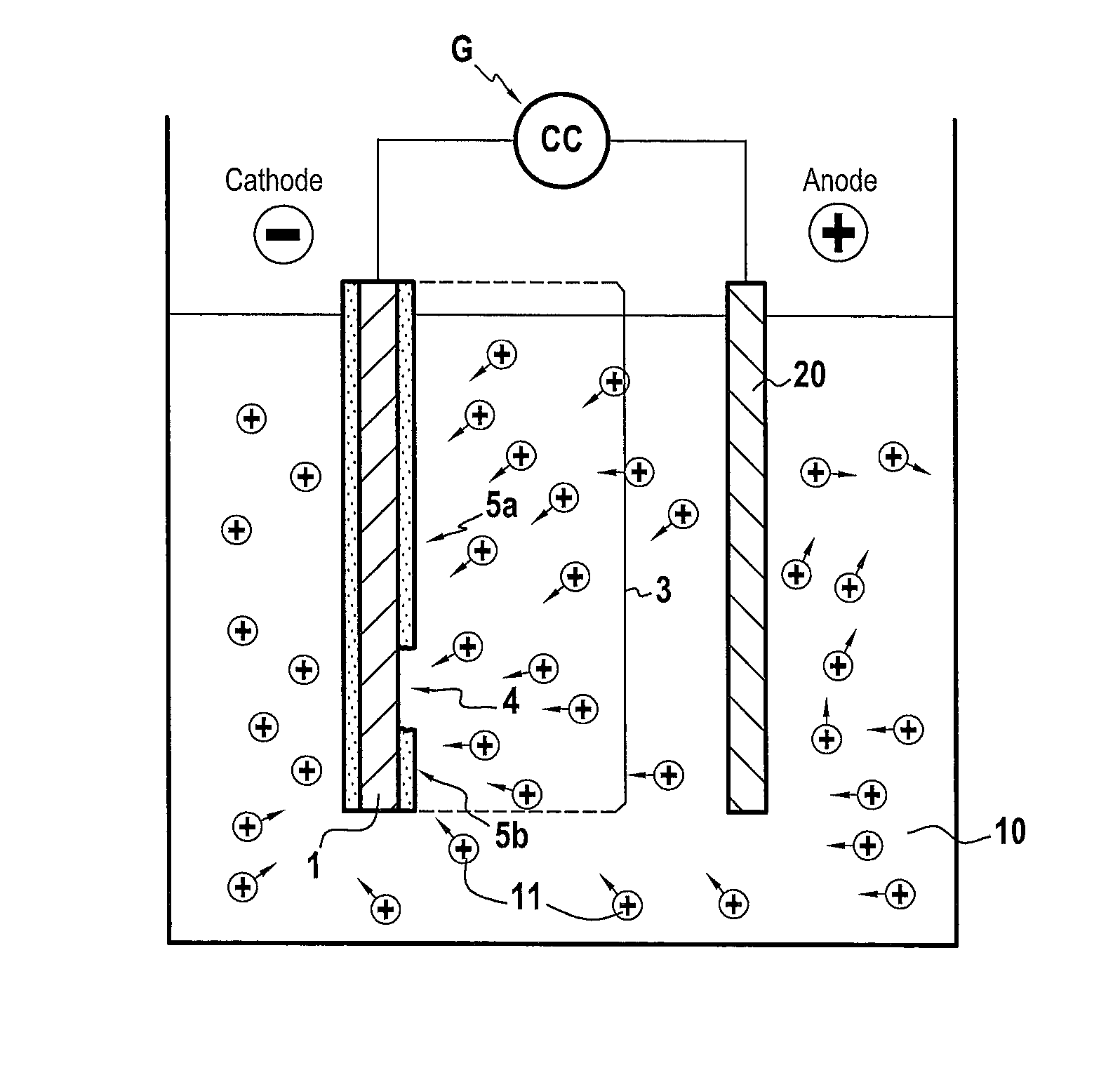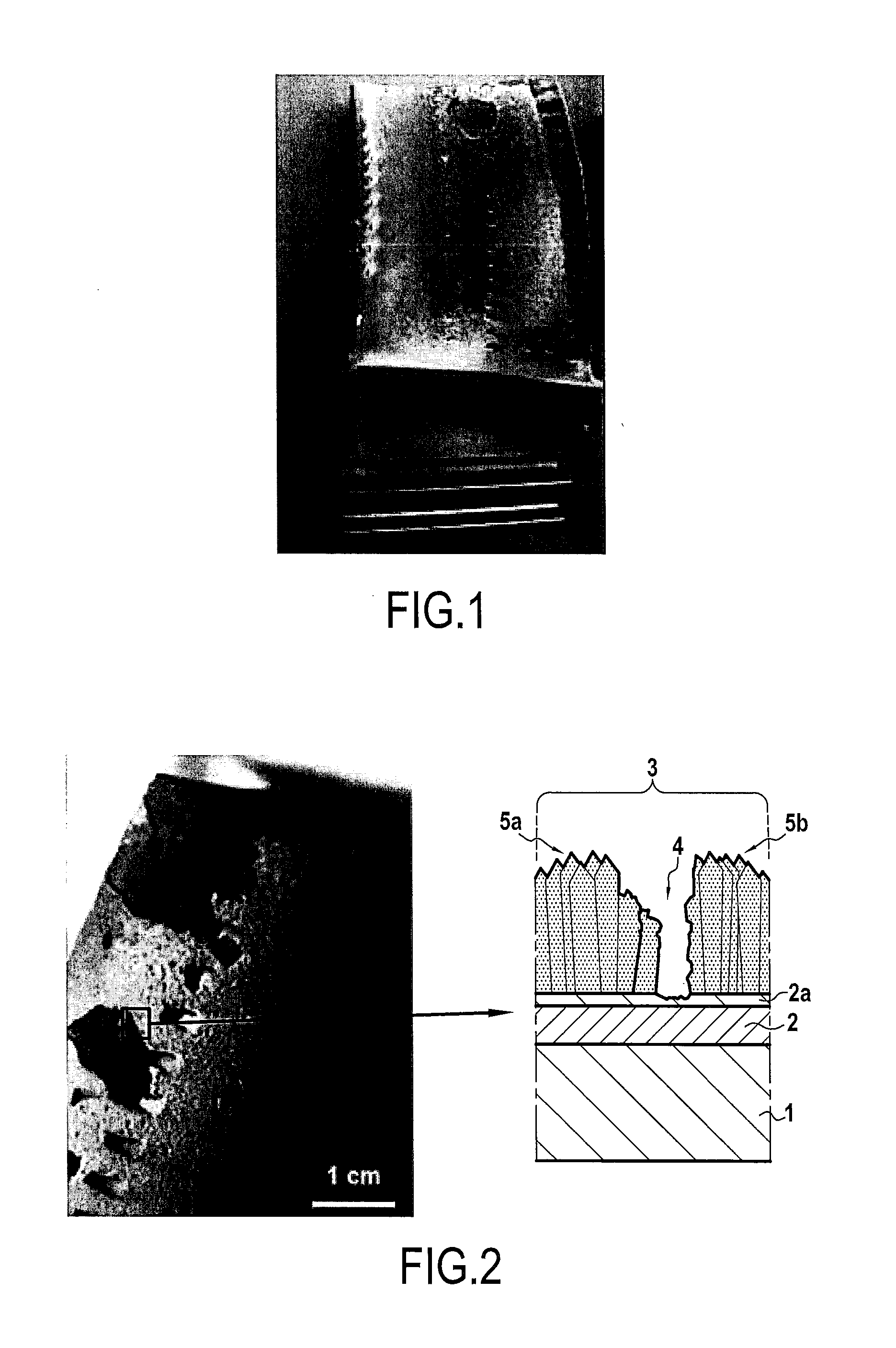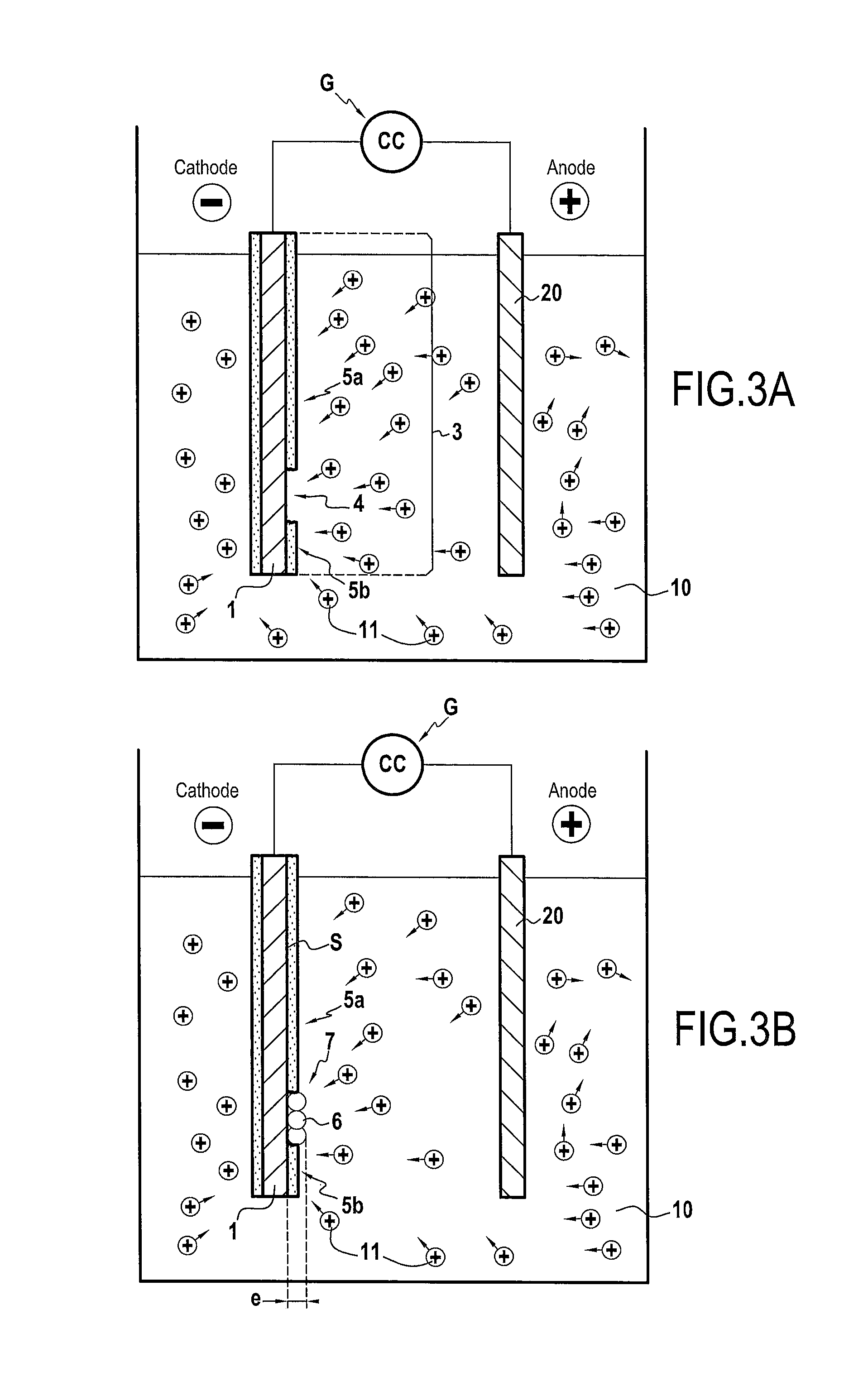Method for localised repair of a damaged thermal barrier
- Summary
- Abstract
- Description
- Claims
- Application Information
AI Technical Summary
Benefits of technology
Problems solved by technology
Method used
Image
Examples
example
[0070]Use was made of a nickel-based superalloy part coated by an yttria-stabilized zirconia (YSZ) thermal barrier obtained by electron beam physical vapor deposition (ED-PVD). The thermal barrier was initially damaged by water jet. FIG. 4A shows the result obtained after damaging.
[0071]Electrophoresis deposition was performed using a suspension of YSZ powder in isopropanol (10 g / L) at a voltage of 100 V for six minutes. A photograph of the part after treatment by the method of the invention is shown in FIG. 4B.
[0072]It can be seen that a covering and uniform deposit of yttria-stabilized zirconia is obtained throughout the damaged zone.
[0073]The term “comprising / containing a / an” should be understood as “comprising / containing at least one”
[0074]The term “lying in the range . . . to . . . ” should be understood as including the limits of the range.
PUM
| Property | Measurement | Unit |
|---|---|---|
| Temperature | aaaaa | aaaaa |
| Thickness | aaaaa | aaaaa |
| Concentration | aaaaa | aaaaa |
Abstract
Description
Claims
Application Information
 Login to View More
Login to View More - R&D
- Intellectual Property
- Life Sciences
- Materials
- Tech Scout
- Unparalleled Data Quality
- Higher Quality Content
- 60% Fewer Hallucinations
Browse by: Latest US Patents, China's latest patents, Technical Efficacy Thesaurus, Application Domain, Technology Topic, Popular Technical Reports.
© 2025 PatSnap. All rights reserved.Legal|Privacy policy|Modern Slavery Act Transparency Statement|Sitemap|About US| Contact US: help@patsnap.com



